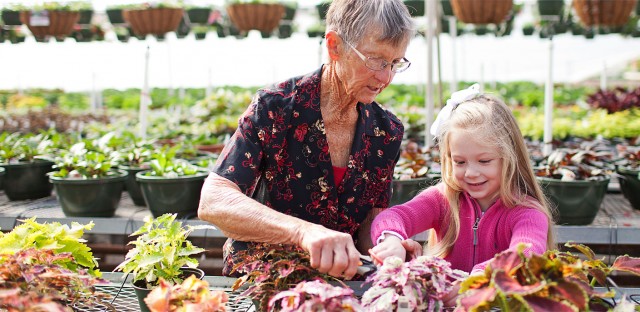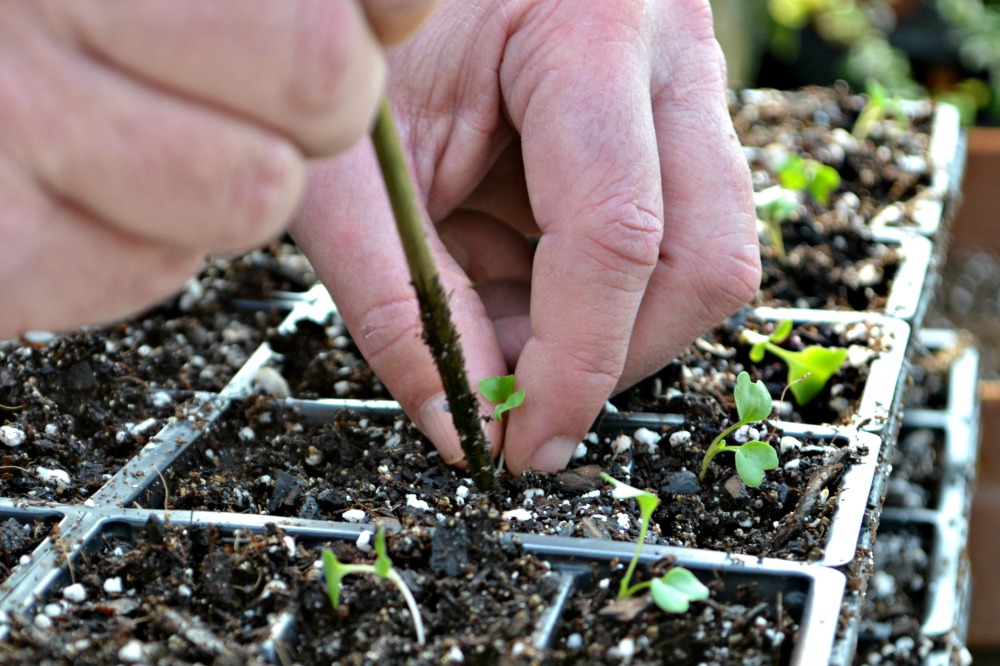Starting a Vegetable Garden – Part 2
Starting a Vegetable Garden from Scratch – Part Two
Now that all the dirty work is done and your garden plot is ready, it’s time for the fun part. Deciding on what vegetables to grow in your new garden? A good place to start is to make a list of the vegetables your family likes to eat. Next look through some seed catalogs or stop by Fairview. We carry a great selection of seeds. There are hundreds of varieties of tomatoes, cucumbers, peppers etc. You will be tempted to try them all but don’t let your eyes get bigger than your garden. Vegetables require a certain amount of space between each plant. It does differs from one veggie to the next, so do a little research on the ones you want to grow to make sure you have enough room. For example, corn is a space hog. You need several rows of corn to have enough to cross-pollinate each other and produce actual ears of corn. Its takes a long time to mature and then you get one good harvest and it’s done. On the other hand pole beans take up very little space and keep producing for weeks.
Next thing to consider is whether you start with seeds or transplants. Some vegetables take several months to mature from seed, so it’s not practical to direct sow them in the garden. That’s why when it comes to long season vegetables like tomatoes, peppers and eggplant, most folks start their plants indoors or buy seedlings from their local garden center. Some vegetables transplant well and others do not. Some can be done either way.
Seed packets will give you most of the information you will need about whether to direct seed in the garden or whether you’ll need to start them so many weeks before the last frost date. Fairview has a vegetable planting guide with tons of information available free of charge. Stop by and pick one up. The lists below will give you some idea of what to plan for.
Vegetables that transplant well:
Beans, broccoli, Brussels sprouts, cabbage, Chinese cabbage, cauliflower, celery, chard, chives, collards, eggplant, endive, escarole, kale, kohlrabi, leeks, mustard, okra, parsley, peppers and tomatoes
Vegetables that are usually direct seeded:
Beans, beets, carrots, corn, cucumbers, garlic, lettuce, micro greens, muskmelons, okra, parsnips, peas, pumpkins, radishes, rutabagas, squash, turnips and watermelons.
Then there are a handful of vegetables that aren’t usually grown from seed at all. They’re grown vegetatively.
Vegetable Grown Vegetatively
Asparagus 1 -2 year old roots
Garlic/Shallots cloves
Horseradish Root cuttings
Onions sets
Potatoes sets
Whatever your choice, direct seeding, early seed starting or purchasing seedlings, it’s best to decide while you are planning your garden. You will want to get your plants in the ground as soon as the last chance of frost has passed. In our area it is usually mid April. Make a schedule for planting. Get a calendar and circle the date of the last expected frost. Then consult seed catalogs, plant labels and seed packets to make a schedule for planting each vegetable you have chosen to grow. For example, the directions on a seed packet for spinach may say it can be sown outside 4 – 6 weeks before the average last frost, so count backwards from the last frost date and mark the date on the calendar to plant your spinach. I take this one step further. I also mark the date in which I can expect to harvest each vegetable. The seed packets, catalogs and plant labels will tell you how many days until harvest too. The reason I do this is simply so I don’t have to remember all those details. It’s all on my calendar.
Garden Tools
Many tools are available to help you grow a vegetable garden. They range in quality from discount store lines to high-priced luxury models. Tools somewhere between these two extremes are suitable for most gardeners. The tools considered essential for maintaining a small or moderate-sized garden are a spade or four-pronged digging fork, trowel, rake, hoe, measuring stick, string, stakes, plant labels, a water-proof marking pen and watering equipment. To this basic list you may wish to add a small sprayer, and wheelbarrow. With these tools at hand you can readily handle most garden tasks.
Watering
Regular water is as important to growing vegetables as sunlight. Regular water means an inch or two per week….every week. More if it is extremely hot. Without regular water, vegetables will not fill out and some, like tomatoes, will crack open if suddenly given a lot of water after struggling without it for a while. So, if you go on vacation for a week, have a neighbor or friend come by and water the garden while you’re away.
Weeding
Vegetables don’t like to compete with weeds for their food and water. Preventing and staying on top of weeds in your garden can be a challenge but not impossible. You will have an advantage since you are starting with a clean empty space each season. Be sure to remove any existing weeds that have popped up before you start to plant. Keep pathways and in between plants weed free cultivating or hoeing and put a good layer of mulch.
Mulch
Mulching is one of the best things you can do for your garden. It suppresses weeds, cools plant roots and conserves water.
Feeding your vegetable plants
Vegetables are very heavy feeders. Hopefully you have incorporated lots of organic matter into the soil while getting your site ready for planting. This will help feed your veggies. Organic plant foods are slow releasing and wont burn your plants. If you opt for a water soluble fertilizer, make sure the garden is well watered before applying it.
Staking Plants
Tall and climbing vegetables will need some sort of staking or trellising. It is best to install the stakes at planting time. If you wait until the plant has grown, you run the risk of injuring the plant roots.
Well, that about sums it up. This is by no means an all inclusive article, but I hope I have inspired you to give it a try and given you enough information to get started. Our knowledgeable staff is always available and willing to answer all your questions and give you the tools you need to be a successful gardener.










